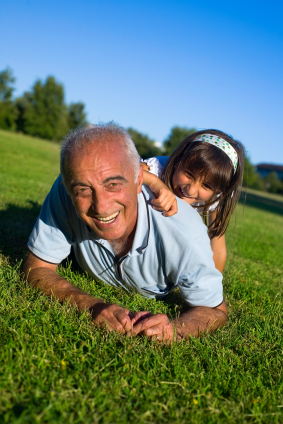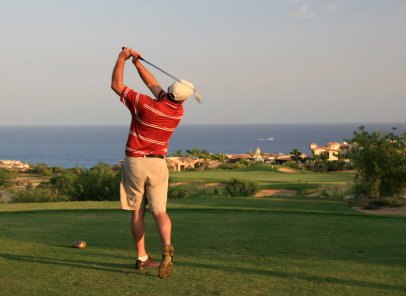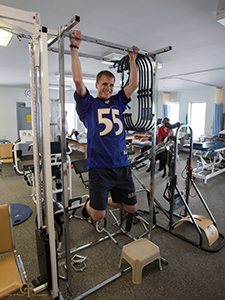Men’s Health
Men’s Health

Urinary and Bowel Urgency, Frequency and Leakage (incontinence) Continence Care for Men:
Urgency or Urgent urination is a sudden, strong urge to urinate or defecate, it is accompanied by discomfort in your bladder or abdomen. Frequency is urinating more often than every 3-4 hours or defecating more than 3 times per day.
Incontinence can happen to athletes, seniors, middle age, children, after surgery or trauma. Incontinence is the loss of bladder or bowel control resulting in involuntary leakage of urine or stool. Pelvic floor weakness resulting in a reduction of muscular support for the bladder, uterus or rectum may be the cause. The muscles through disuse are unable to tighten and keep the openings closed. Incontinence of urine may be termed stress (leakage with physical activity, coughing, sneezing or laughing), urgency (involuntary bladder emptying whenever the sensation of urge is felt) or frequency. Involuntary leakage of feces and gas can be the result of chronic constipation or trauma. Behavioral assessment of foods, beverage, medications and toilet habits can identify contributing factors. Treatment includes retraining bowel and bladder habits, abdominal and pelvic floor muscle rehabilitation with or without electrical stimulation or biofeedback.

Urinary and Bowel Symptoms Before and After Prostate Removal
Physical therapy before prostatectomy eliminates the anxiety of what to expect and teaches you how to counteract the effects of prostate removal once the urinary catheter is removed. Providing pre-operative care is complete with behavioral modification instruction and muscle rehabilitation, post-operative care focuses primarily on the abdominal, trunk, hip and pelvic floor rehabilitation using biofeedback.
Constipation
Constipation refers to bowel movements that are infrequent (less than daily) or hard to pass.] Constipation is a common cause of painful defecation/bowel movements. Severe constipation includes obstipation (failure to pass stools or gas) and fecal impaction, which can progress to bowel obstruction and become life-threatening. Physical therapy treatment includes pelvic floor muscle relaxation and breathing techniques to calm the nervous system, manual therapies to promote soft tissue relaxation and symmetry and instruction in behavioral and lifestyle modifications.

Anal Fissures and Hemorrhoids
Treatment is focused on the use of ultrasound and electrical stimulation to reduce anal spasms, pain, and inflammation. Treatment also includes pelvic floor muscle relaxation and breathing techniques to calm the nervous system, manual therapies to promote soft tissue relaxation and symmetry and instruction in behavioral and lifestyle modifications.
Pelvic Floor, Lower Abdominal, Groin Pain / Tension Myalgia / Trigger Points / Trauma
Pelvic floor tension or pain in the sling of muscles that support the bladder and rectum can be caused by muscle, nerve, joint problems, scar tissue from surgery or after radiation. Pelvic pain can also be caused by hemorrhoids, anal fissures, organ prolapse or constipation. The individual may have painful intercourse, difficulty sitting, and pain in the buttocks, hips, lower abdomen or low back. Imbalances in the muscles surrounding the pelvis can cause or contribute to symptoms. Rehabilitation includes pelvic floor relaxation training, manual therapies, postural and therapeutic exercise, electrical stimulation and biofeedback.

Painful Intercourse
Dyspareunia is the term used for painful intercourse. Asymmetry in the spine, pelvis, hips accompanied by tight, imbalanced muscles in the trunk, hips, and pelvic floor may be the source of painful intercourse. Pelvic floor tension or pain in the sling of muscles that support the bladder and rectum can be caused by muscle, nerve, joint problems, scar tissue from surgery or after radiation. The individual may have painful intercourse, difficulty sitting, and pain in the buttocks, hips, lower abdomen or low back. Rehabilitation involves the spine, pelvis and the pelvic floor. Treatment includes manual therapies, postural and therapeutic exercise, relaxation training, electrical stimulation, biofeedback and education in self-care.
Prostatitis, infection, foreskin problems, deformities of the penis, allergic reactions and hypersensitivity may be the cause of painful intercourse. It is important to see your physician for these concerns.
Scar Tissue, Adhesions, Swelling After Surgery or Radiation
After any type of surgery or radiation treatment, the body must rest and recuperate. During this time the muscles atrophy with rest. In addition, scar tissue and adhesion may develop during the healing process. In some people too much develops and restricts the mobility of the muscles and joints causing pain. Movement is compromised and painful. After a radical neck procedure, abdominal surgery, breast surgery or hernia repair there are questions about when movement and what type of movement is recommended. Physical therapy treatment provides guidance in the return to activity and eliminates the question of safety or re-injury. Manual therapies, postural education, and therapeutic exercise are instructed to facilitate adequate healing. Graston Technique® and Kinesio Taping® are often very beneficial.
Cancer Related Fatigue
Surgical procedures, radiation, and chemotherapy all cause significant fatigue. Physical therapists are educated on proper progression to resume physical activity. They also provide instructions on energy management.

Osteopenia/Osteoporosis
Osteopenia is the precursor to osteoporosis. Osteoporosis is a condition in which bones become thin and brittle, and break more easily. Screening is available to identify peak bone mass. Prevention education and treatment programs include fall prevention, balance activity, instruction in proper body mechanics and exercise, fitting of braces or orthotics and pain management.

Abdominal Rehabilitation After Hernia Repair
Progressive instruction and home exercise for the pelvic floor, abdominal, hip and trunk muscle rehabilitation is necessary for recovery after surgery. Instruction on splinting and bracing is also part of the treatment plan. Kinesio Taping® is often beneficial. Manual therapies to facilitate good tissue healing and prevent adhesion and scar tissue formation is very important.


